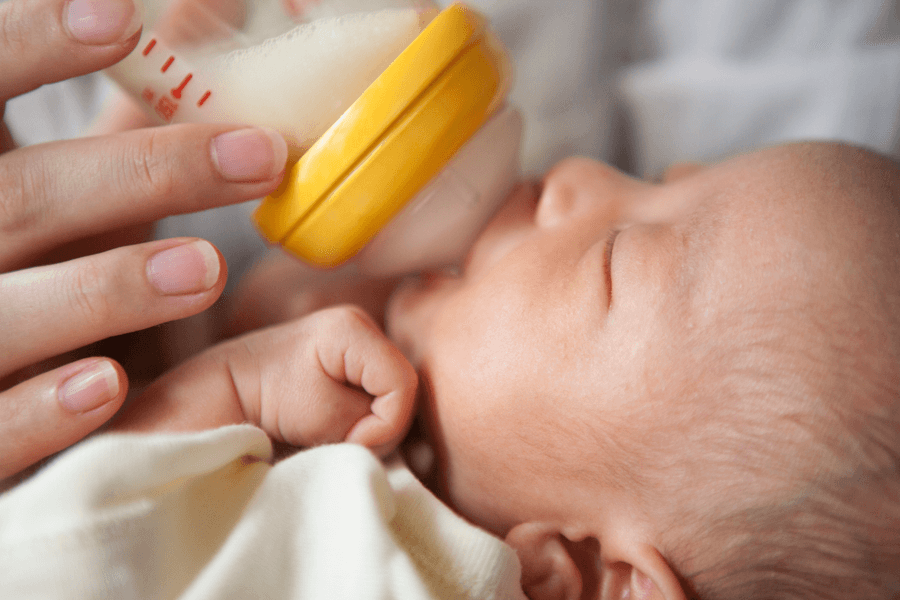Feeding time is not just about food. It is also a unique opportunity for closeness, warmth, skin-to-skin contact, eye contact, love and interaction between the parents and the baby. These factors are as important, regardless of whether you are breastfeeding or bottle feeding.
A baby being fed with a bottle should ideally be fed by the parent to foster the connection between you two. Safe skin-to-skin contact in the beginning also helps with bonding and offers several benefits for the baby: baby becomes calm, blood sugar levels stabilize and baby maintains a good body temperature. If baby is lying close, baby can also smell the scent of the person feeding him or her.
Recommendations
The person feeding baby should sit comfortably, have everything within reach and create a calm environment. Touching in connection with feeding releases the peace-and-quiet hormone oxytocin in the baby. When baby sucks on the bottle, stomach hormones are also released that stimulate digestion and help calm your baby.
Preparing formula When you prepare the infant formula, it is important that you follow the instructions on the package in terms of quantities, preparation and best-before-date. The recommended quantity per feeding and day varies depending on baby’s age, weight and appetite.
When needed, consult your midwife or the nurse at the child health clinic. They can also help you to choose the best products if you have, for example, allergies in the family.
Sitting When you bottle feed, we recommend holding your baby fairly upright in your arms and supporting baby’s head and neck with your arm. This gives you good eye contact with your baby while feeding.
Baby’s hunger signals It is important to schedule feedings when baby is hungry. Tiny newborn infants often have hunger signals that they use. When baby turns his or her head, looks for something to suck on, puts his or her hand to the mouth and eventually gets fussy and cries, these are signs that baby is hungry.
Remember when you feed baby While feeding, remember to hold the bottle still and do not force the baby if he or she wants to take a little break. You do not always have to remove the bottle during a break, simply lower it to a horizontal position while your baby takes a break, and then elevate the bottle when baby starts sucking again.
Some babies need to burp a couple of times during a feeding session, but this is varies. Your baby may need an extra moment of closeness in your arms after feeding.
Nipples and bottles
If baby is eating pumped breast milk, the milk should be stored in the refrigerator between pumping and feedings. When the breast milk or infant formula is given to the baby, it should be room or body temperature.
Choosing a bottle Which type of nipple or bottle you use is mostly a question of taste. Some babies prefer a certain nipple shape. However, it is important that the bottle’s nipple has a tiny hole so that baby does not get too much at one time.
Cleaning and maintenance Clean the nipple and bottle after each feeding session. This is best done by first rinsing with cold water and then washing with hot water and detergent and then rinsing the teat and bottle carefully. Boil the bottle and nipple for about five minutes once each day.
Support from others The opportunity to feed a little baby brings joy to many people. If possible, the parents should feed their baby. Other people can help with other chores, such as mixing the formula, washing the bottle, cooking food for the parents and cleaning.
Mothers who cannot or do not want to nurse should always be treated with respect by those around them. If you feel sad that you cannot nurse, speak with your midwife or the nurse at the child health clinic for support and advice.
Feeding is a moment when you, the parent, and your baby develop a close and unique connection that is important for your baby’s emotional development.
